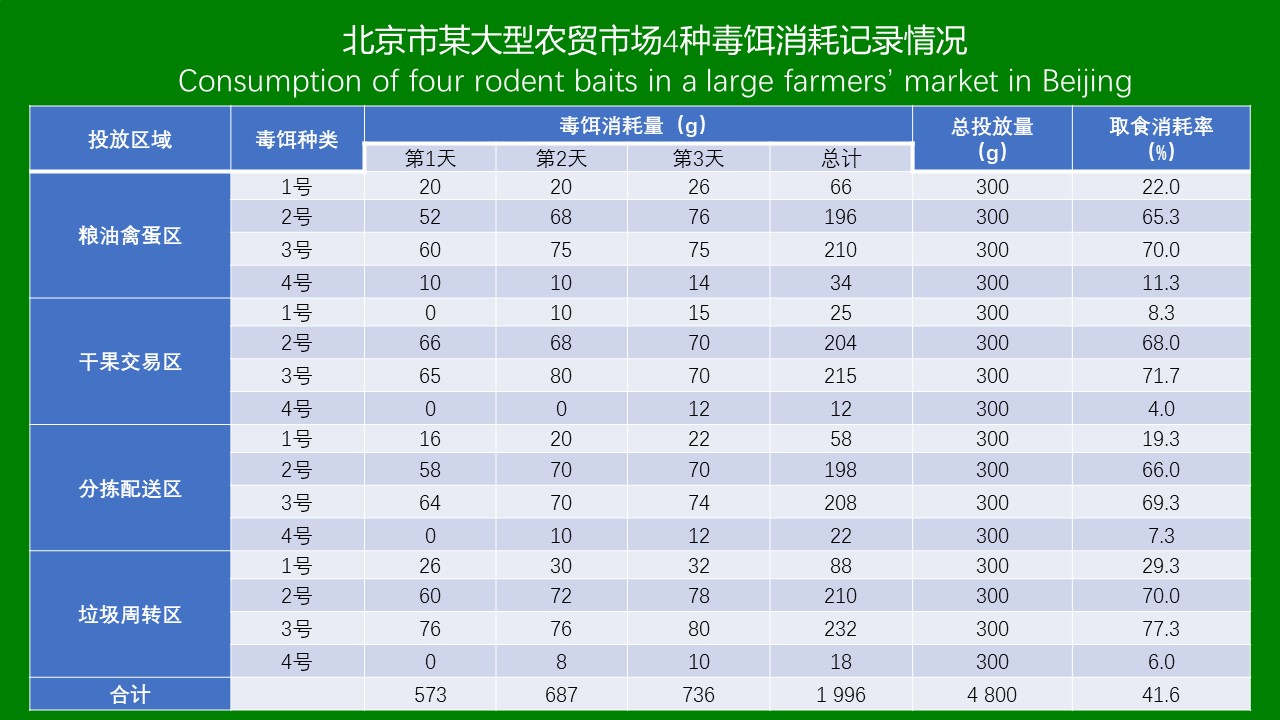 PDF(843 KB)
PDF(843 KB)


北京市某大型农贸市场灭鼠毒饵筛选及灭鼠效果评价
郭郁, 武庆锐, 刘美德, 刘园, 闫帅, 李若曦
中国媒介生物学及控制杂志 ›› 2022, Vol. 33 ›› Issue (4) : 521-524.
 PDF(843 KB)
PDF(843 KB)
 PDF(843 KB)
PDF(843 KB)
北京市某大型农贸市场灭鼠毒饵筛选及灭鼠效果评价
 ({{custom_author.role_cn}}), {{javascript:window.custom_author_cn_index++;}}
({{custom_author.role_cn}}), {{javascript:window.custom_author_cn_index++;}}Palatability and deratization effectiveness evaluation of rodent baits in a large farmers' market in Beijing, China
 ({{custom_author.role_en}}), {{javascript:window.custom_author_en_index++;}}
({{custom_author.role_en}}), {{javascript:window.custom_author_en_index++;}}
| {{custom_ref.label}} |
{{custom_citation.content}}
{{custom_citation.annotation}}
|
/
| 〈 |
|
〉 |